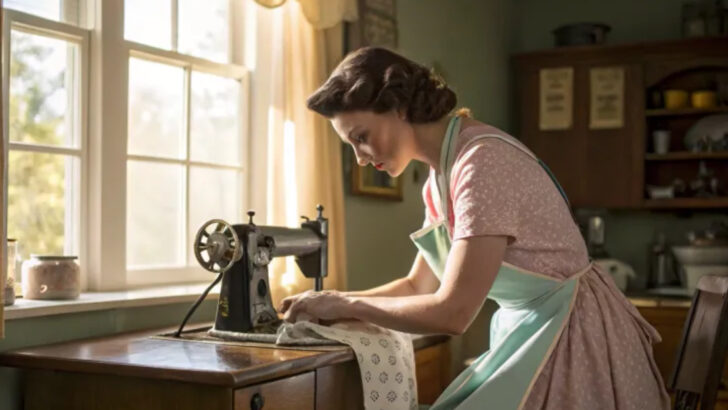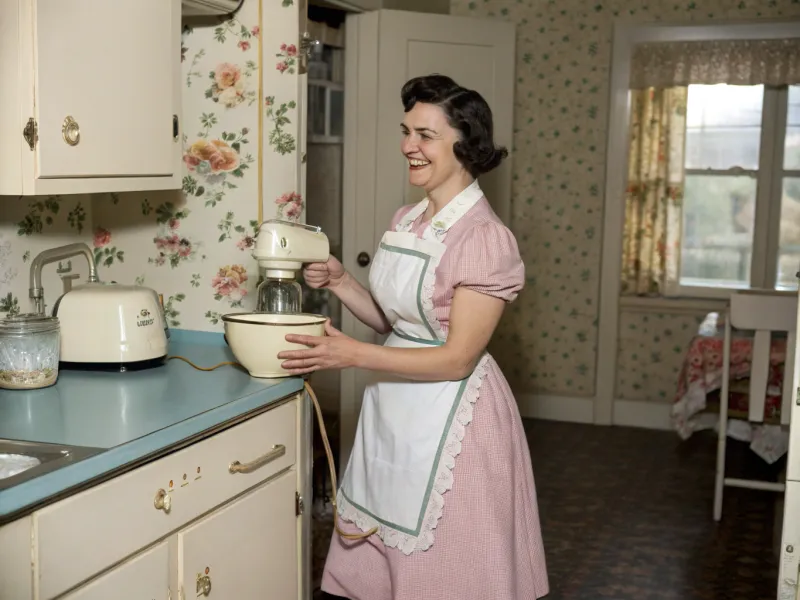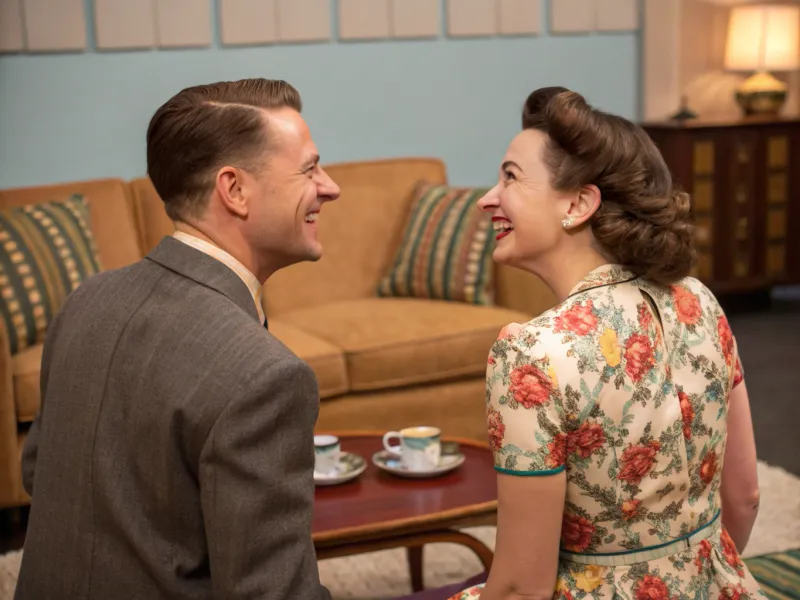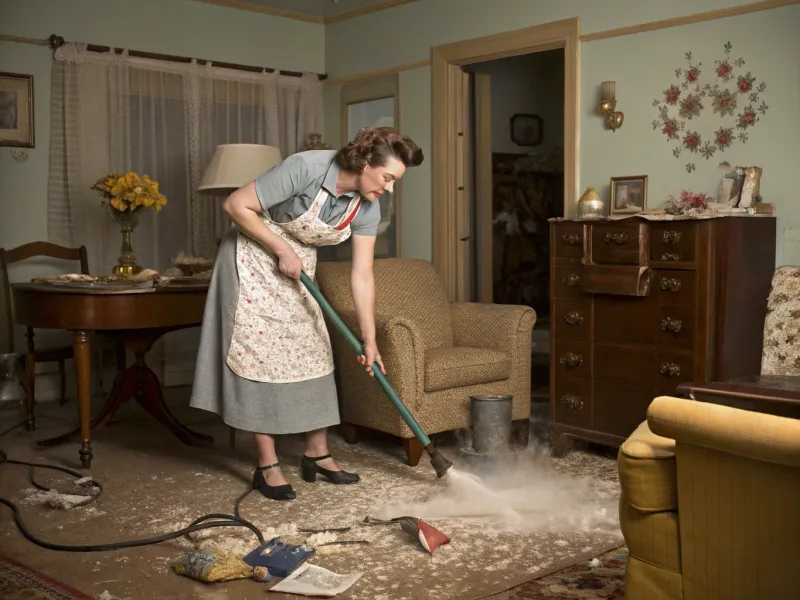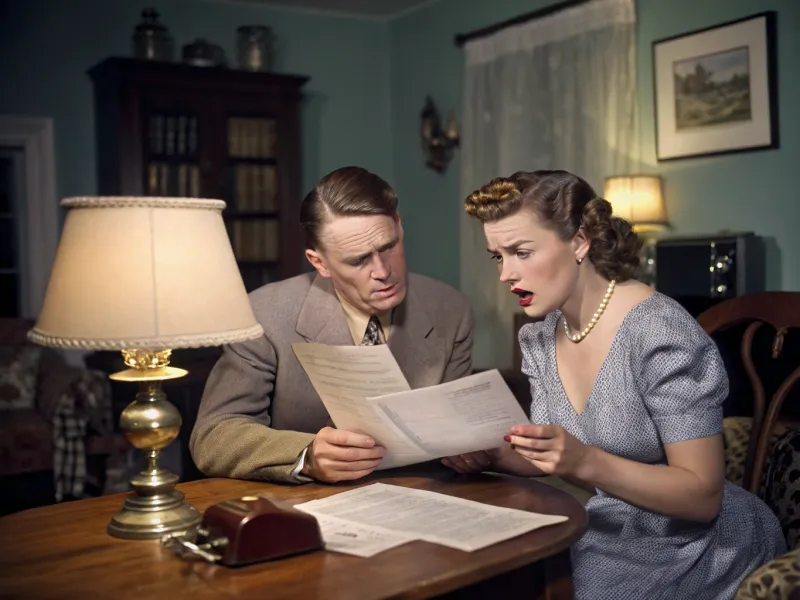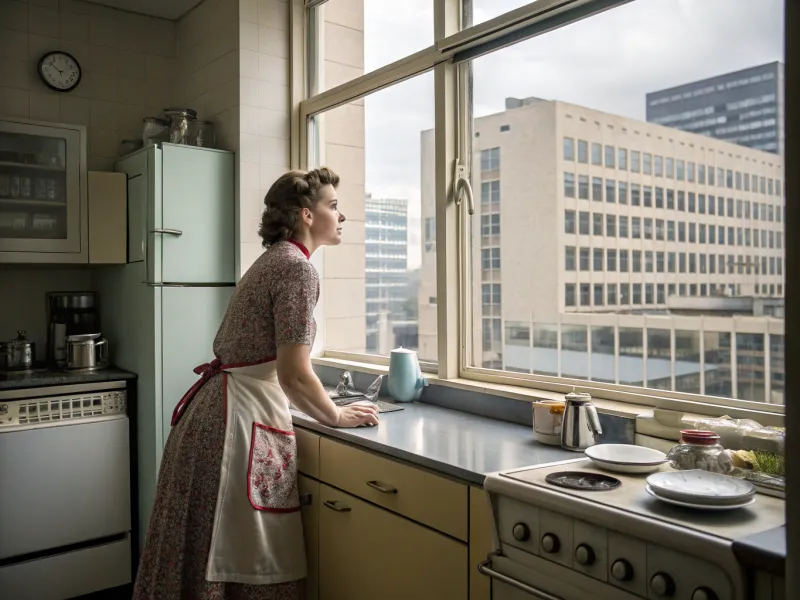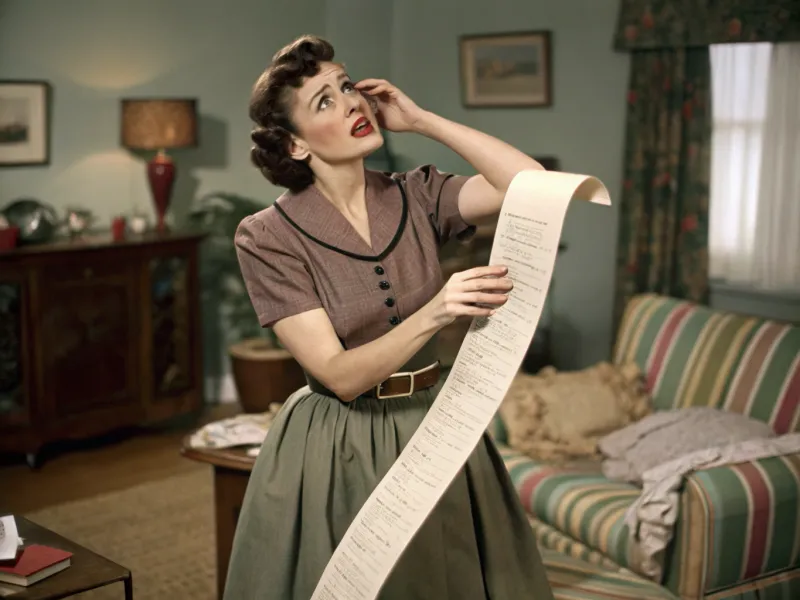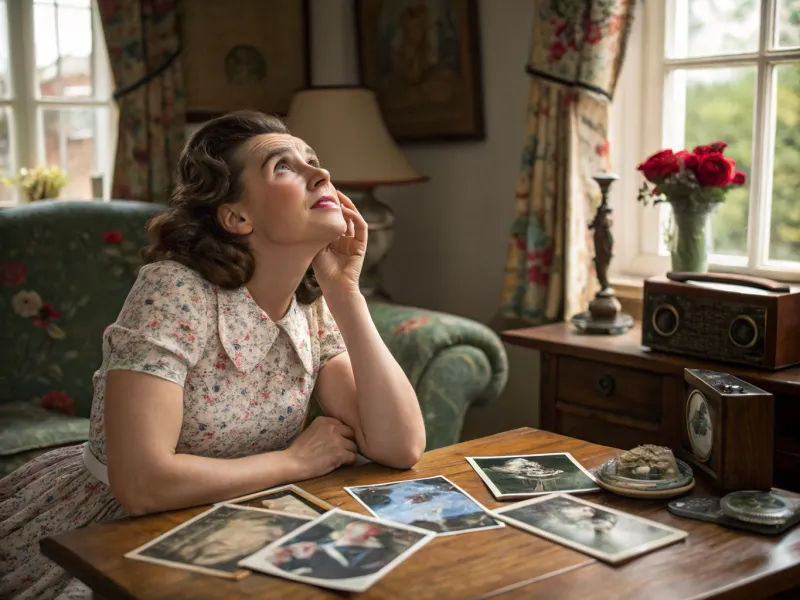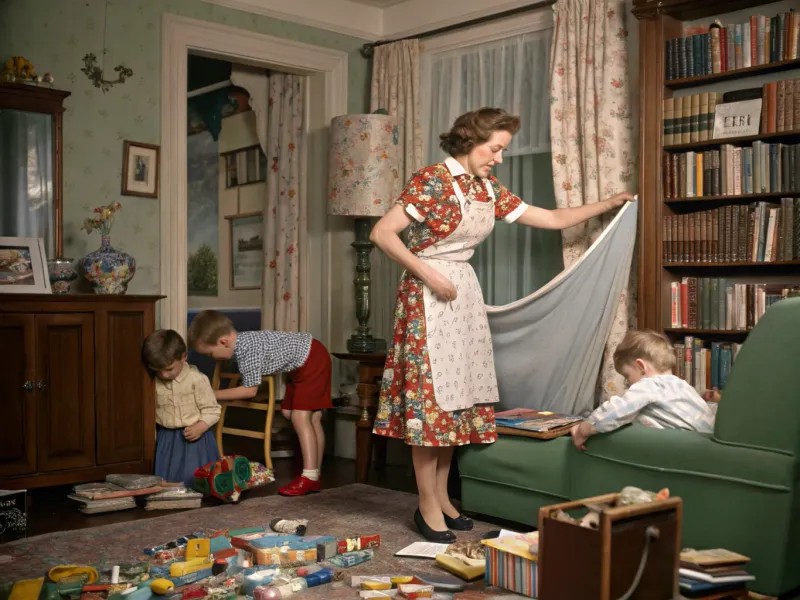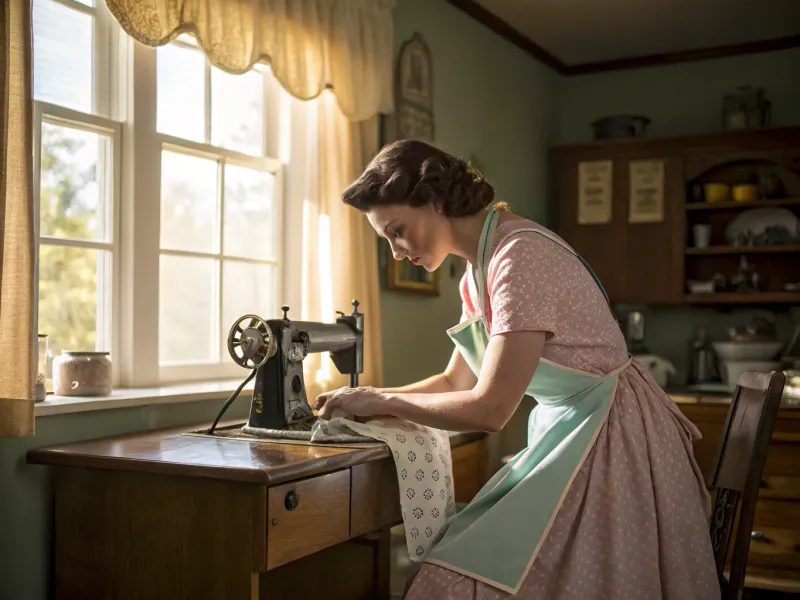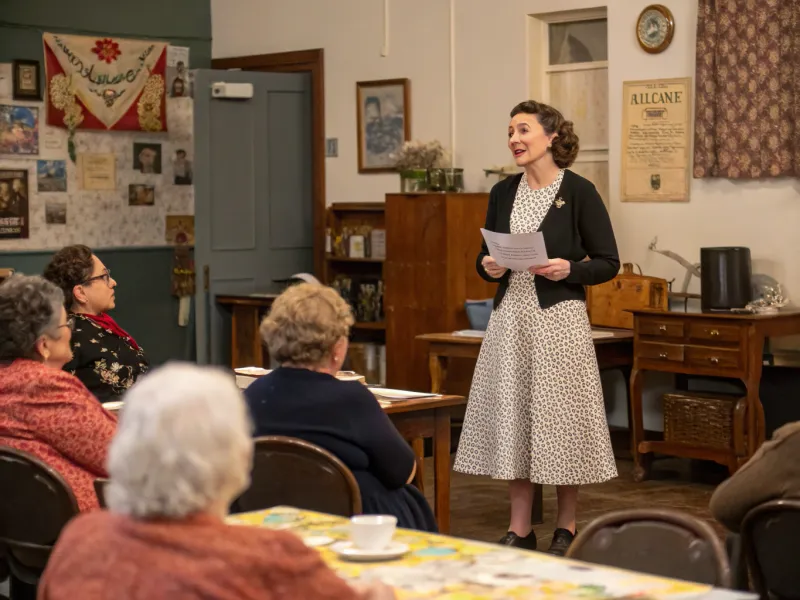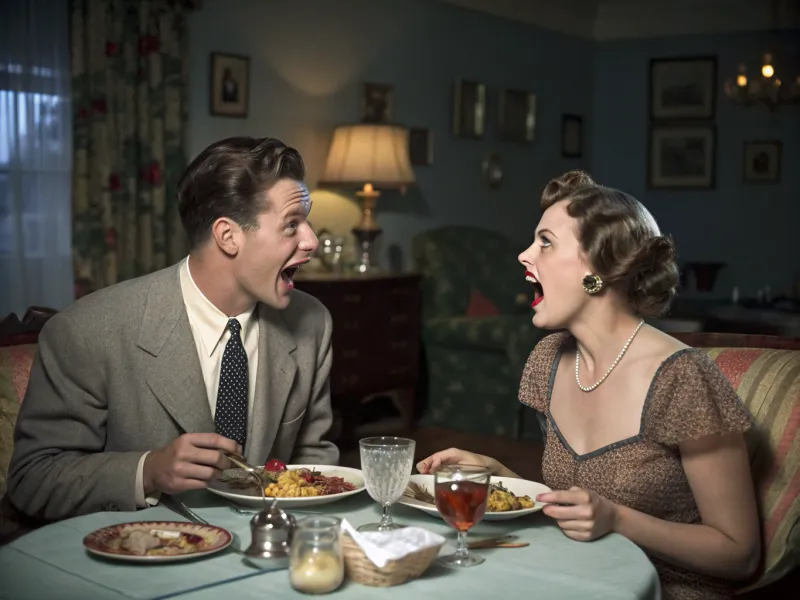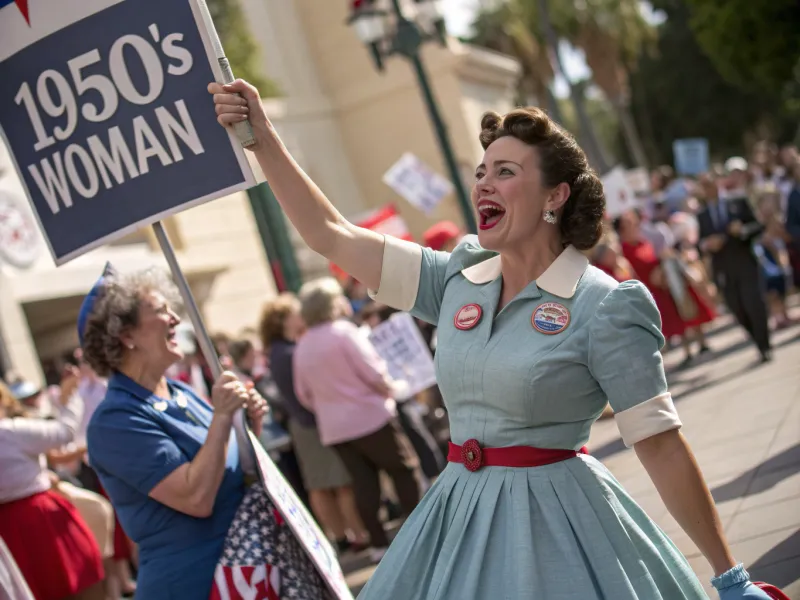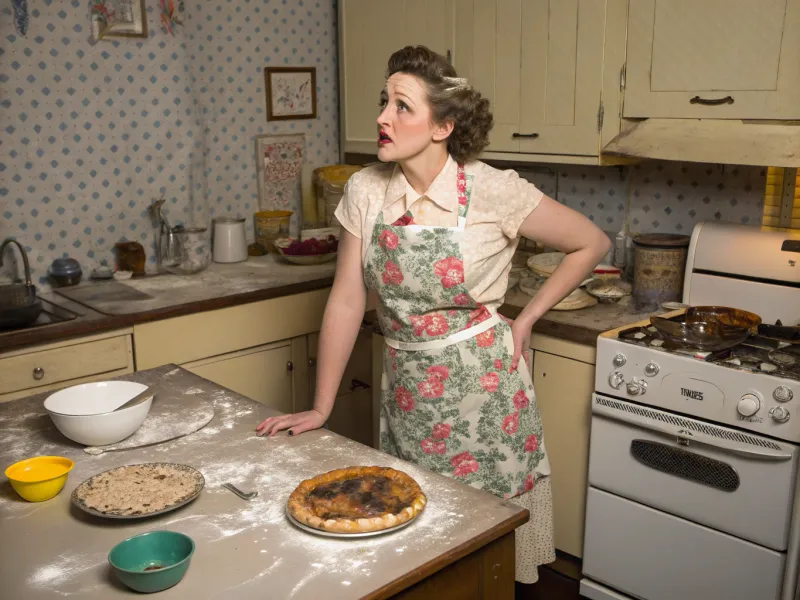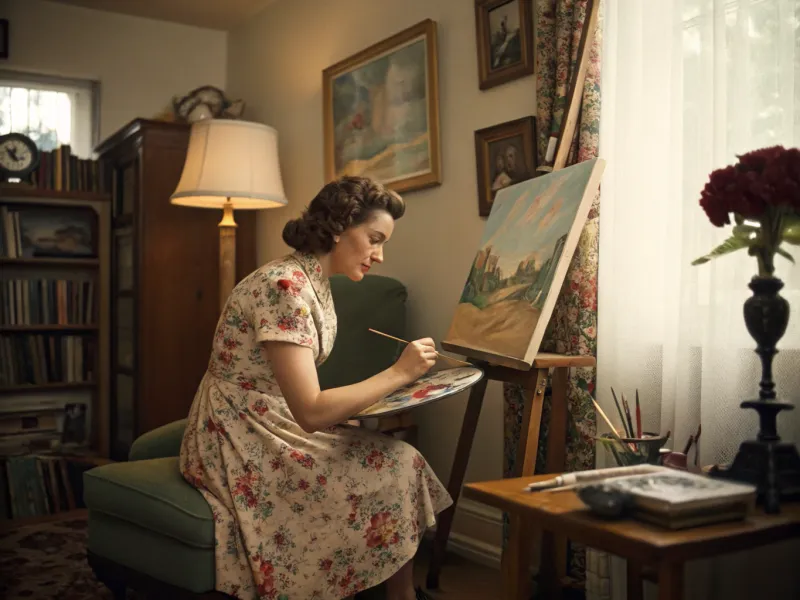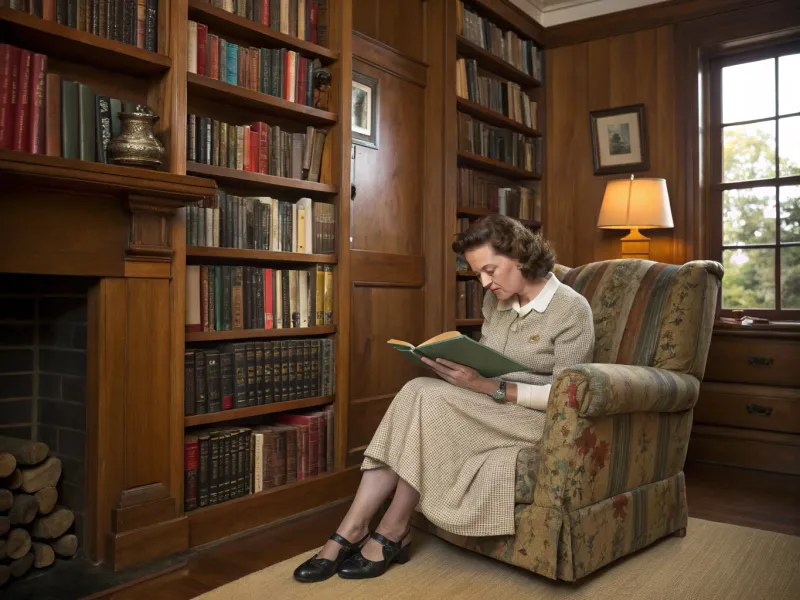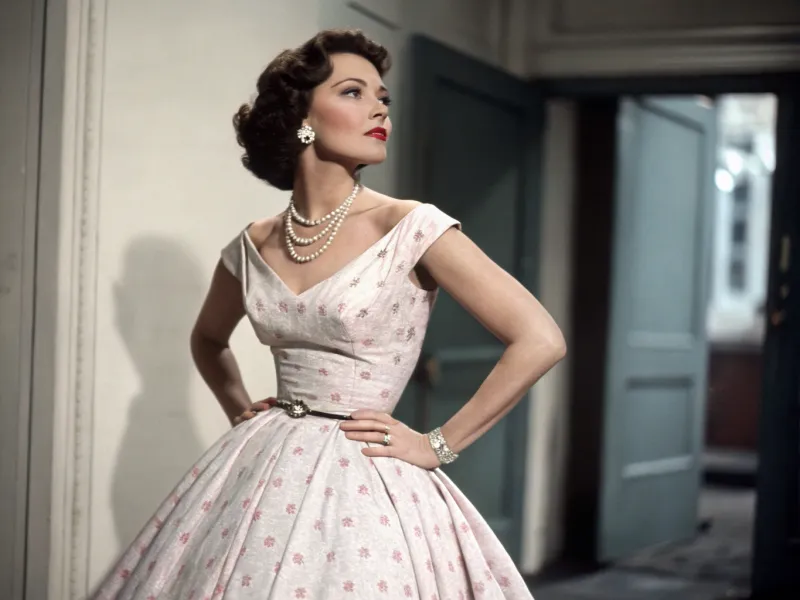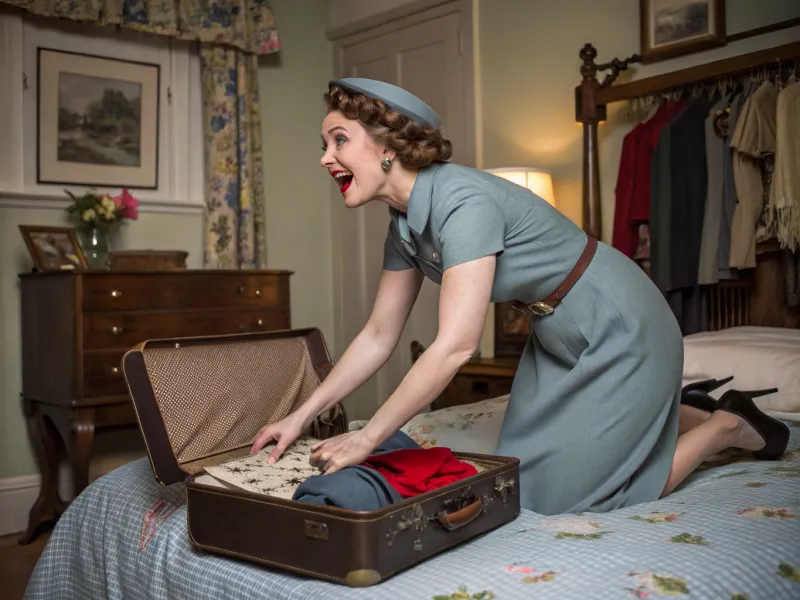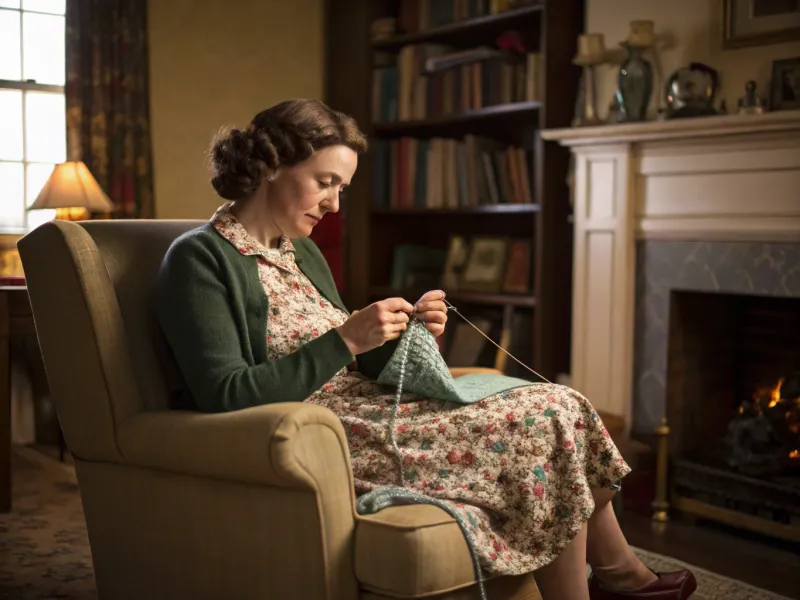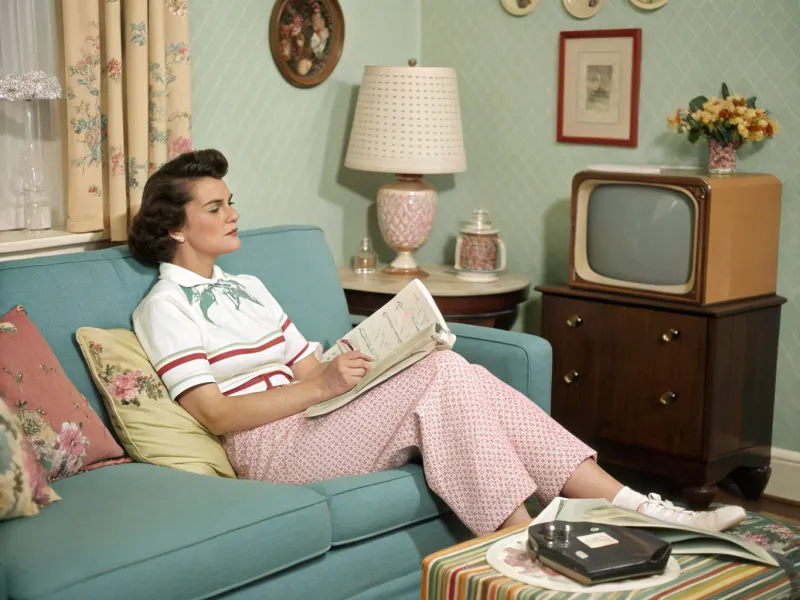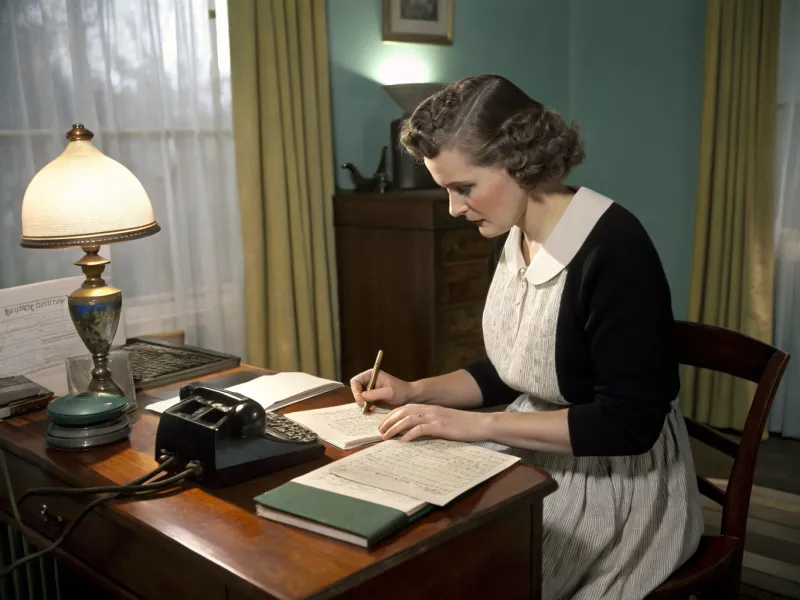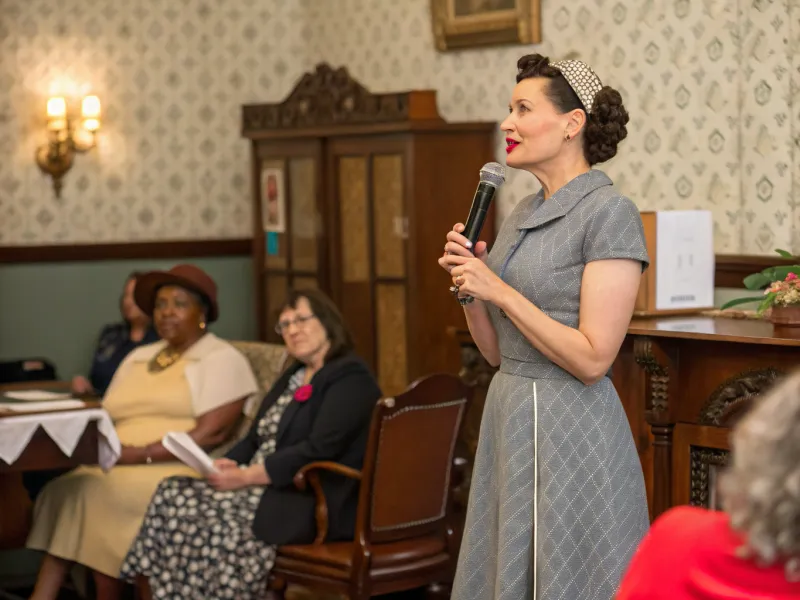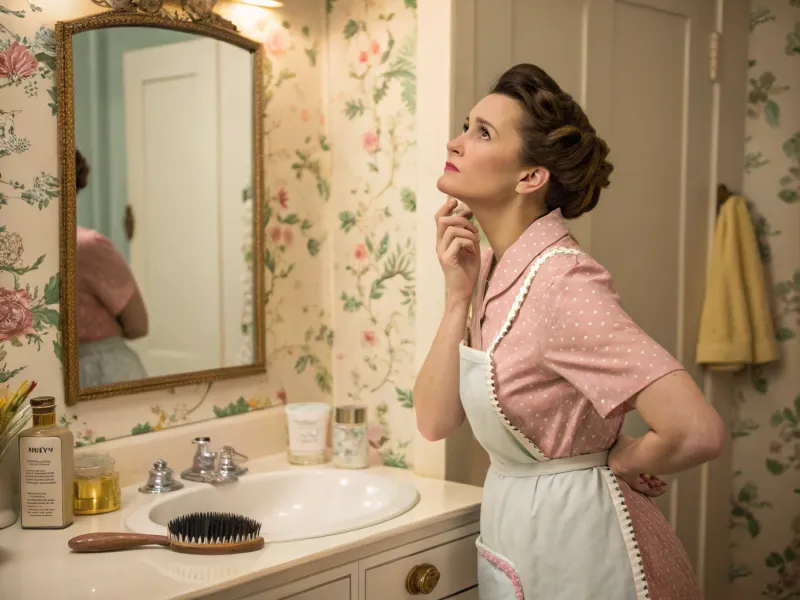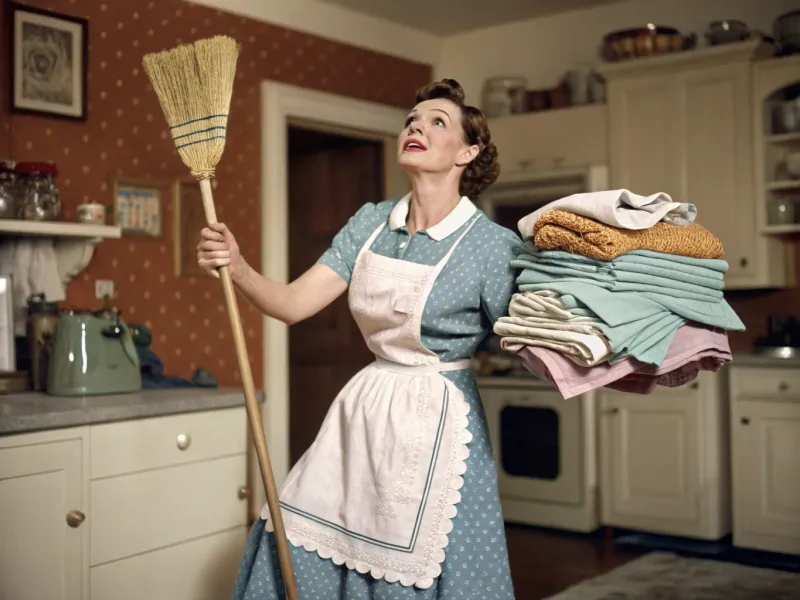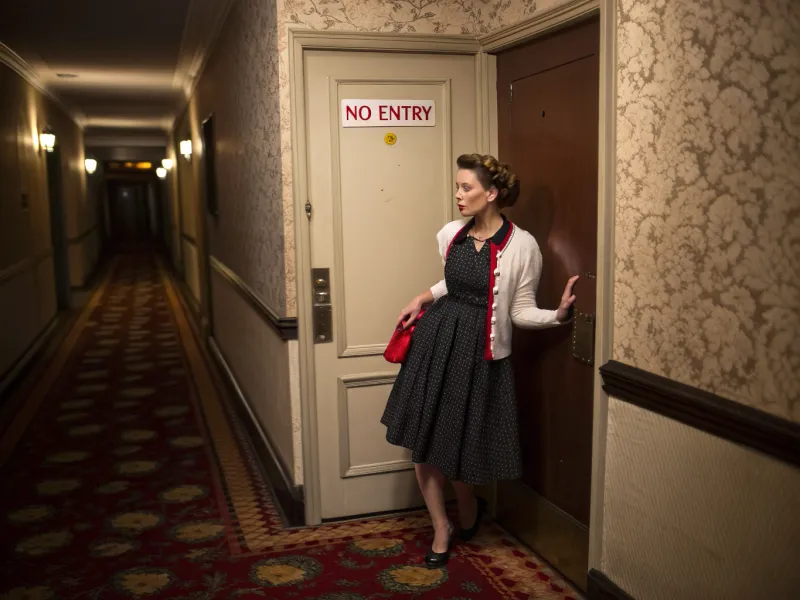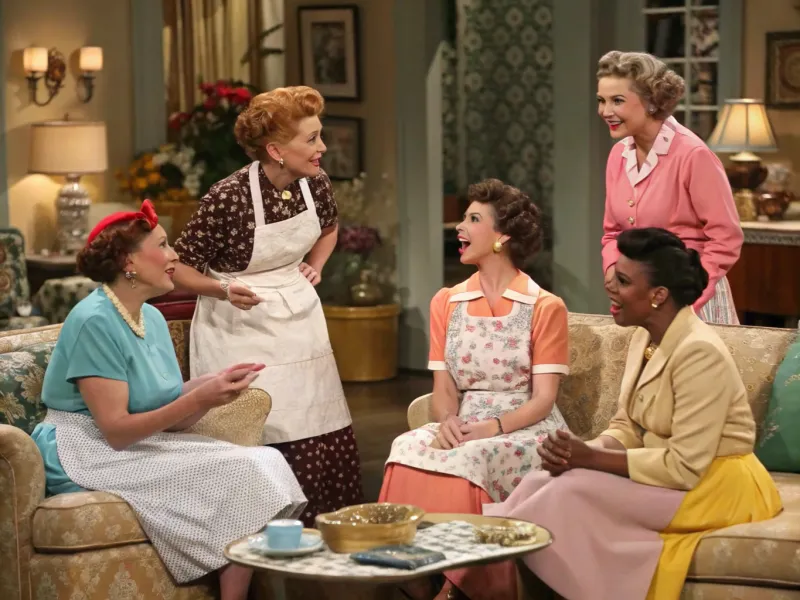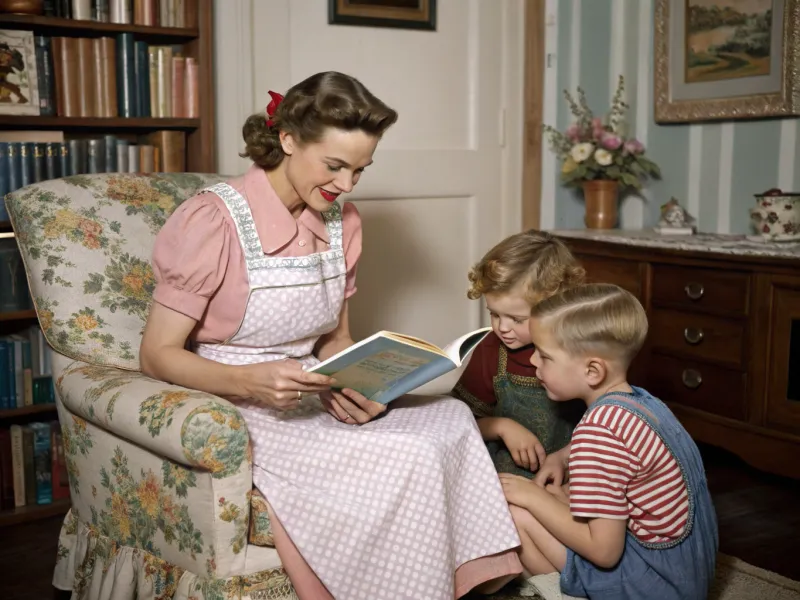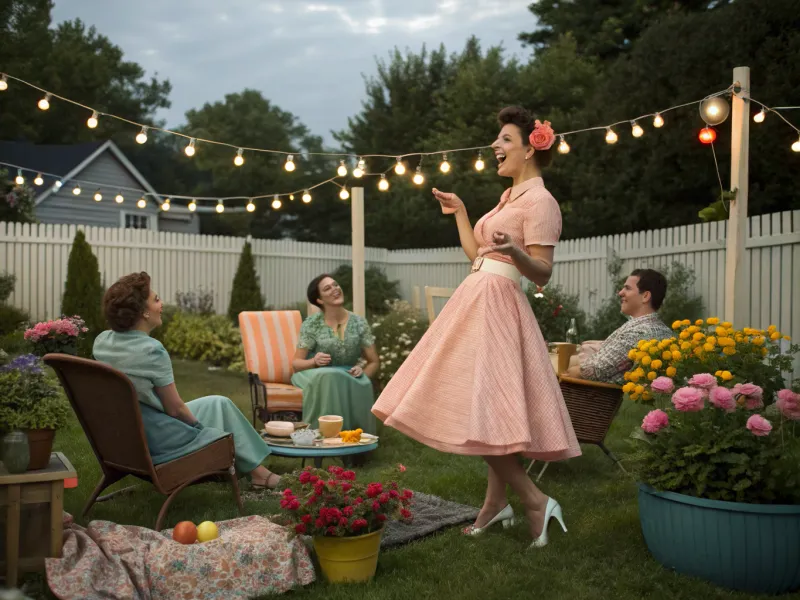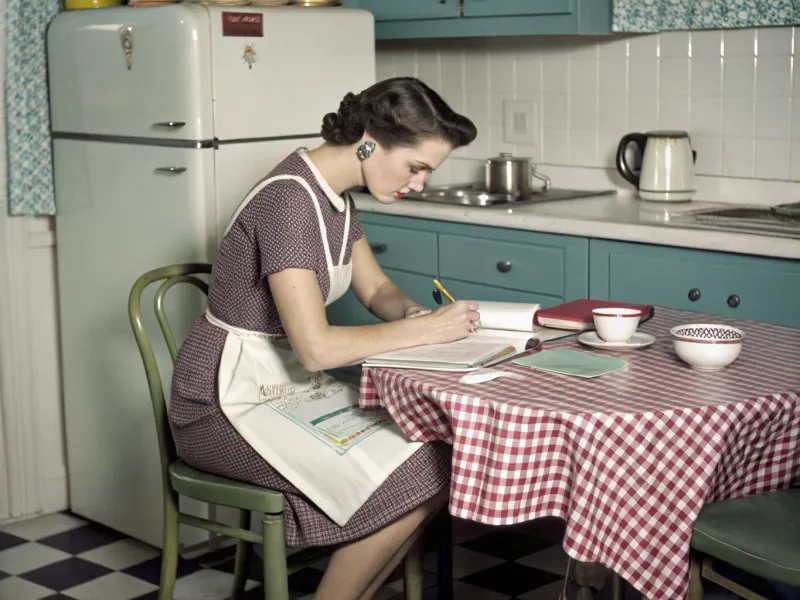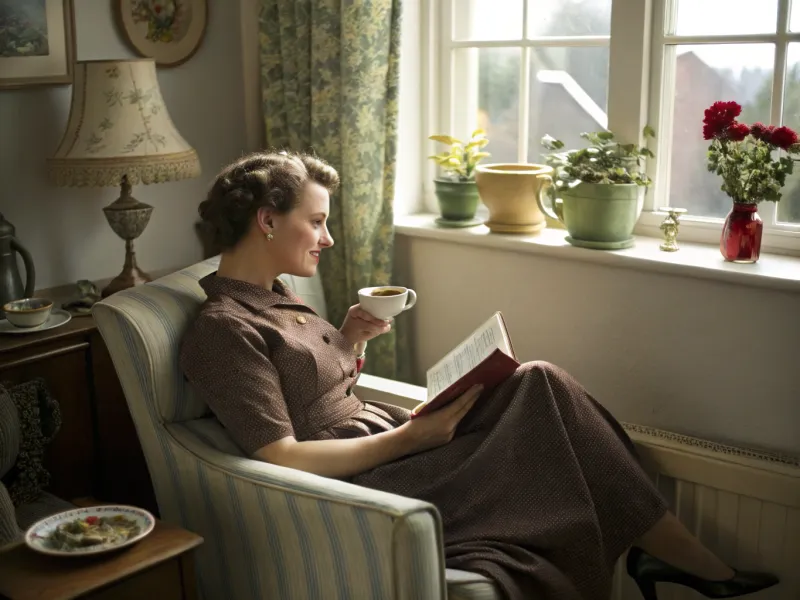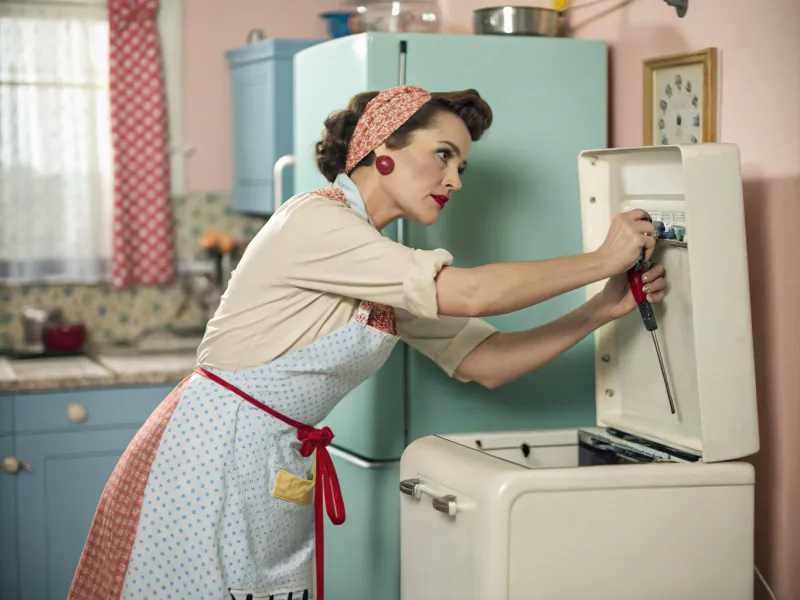Strap in—we’re diving into the wildest myths about 1950s housewives. You know the image: women in perfect curls and pearls, happily baking pies and vacuuming like it’s their life’s calling. Well, it’s time to toss that picture out the window.
We’re tackling 30 myths that have been floating around for way too long, and trust me, they need debunking. Let’s get real about why modern women aren’t exactly lining up for a one-way ticket to the 1950s.
1. Myth: Housewives Were Always Happy
Oh, the idyllic image of the ever-smiling 1950s housewife who found endless joy in ironing shirts and baking casseroles. But let’s be real: behind those picture-perfect smiles, many women grappled with feelings of unfulfillment and boredom. Society painted a picture of happiness tied to domestic duties, ignoring the individuality and aspirations of these women.
While TV shows sold us the fantasy of blissful homemakers, the reality was a bit different. Women often faced societal pressure to conform to these roles, which sometimes led to mental health struggles. The lack of opportunities outside the home left many yearning for more.
It’s no wonder modern women, who now have the freedom to pursue diverse careers and passions, aren’t keen on revisiting an era where their ambitions were sidelined. Today’s woman knows that happiness isn’t found in dusty corners or perfectly browned roasts. It’s about having choices, and the 1950s didn’t offer enough of those.
2. Myth: They Had Perfect Marriages
The notion of the flawless 1950s marriage is as persistent as it is misleading. From the outside, it seemed these couples lived in perfect harmony, but behind closed doors, the picture wasn’t always so rosy. Couples often stayed together due to societal expectations, not genuine happiness.
Divorce was stigmatized, particularly for women, who faced limited options if they left their husbands. This pressure to maintain a façade of marital bliss often meant problems were swept under the rug, leading to unaddressed issues and dissatisfaction.
Fast forward to today, and women have the autonomy to seek relationships that fulfill them emotionally and intellectually. The ability to leave an unhappy marriage without facing the same societal backlash is a freedom women cherish. True partnership, not just the appearance of one, is the goal now.
3. Myth: The Home Was Always Spotless
Ah, the spotless 1950s home—a myth as pristine as it is improbable. The truth is, maintaining a perfect home was a relentless and often unattainable goal. With limited modern conveniences, daily chores were time-consuming and exhausting, leaving little room for the leisure implied by those sparkling kitchens.
The pressure to present an immaculate home was immense, with homemakers judged on their ability to keep up appearances. Yet, many struggled with the endless cycle of cleaning and tidying, often feeling inadequate if every surface didn’t gleam.
Today, women balance work, family, and self-care, understanding that a dust-free home doesn’t equate to success or happiness. Embracing life’s messiness is part of the charm, and nobody’s scrambling to go back to a time demanding spotless floors above all else.
4. Myth: They Had No Financial Worries
Cue the laugh track: the idea that 1950s housewives lived in financial bliss is utterly comical. Many families were far from rolling in dough, with financial strains hidden beneath the veneer of suburban prosperity. Housewives often had to stretch every dollar to make ends meet, all while appearing untroubled.
Despite the single-income household model, money was tight for many families, leading to stress and anxiety. Women, expected to manage the household budget, often had to cut corners and get creative with meager resources.
Today’s women are financially savvy and independent, with access to education and careers that their grandmothers could only dream of. The freedom to earn and manage their own money without being tied to a partner’s income is a significant reason women aren’t longing for a return to the limiting financial roles of the ’50s.
5. Myth: They Didn’t Want Careers
The myth that 1950s housewives were content without careers is as stale as last week’s bread. Sure, some women relished their roles at home, but many harbored dreams of careers that societal norms squashed. Opportunities were limited, and women were often discouraged from pursuing ambitions outside domesticity.
The era was rife with sexism, and career aspirations were seen as unfeminine or selfish. Women who dared to break the mold faced discrimination and were often labeled as neglectful of their home duties.
Fast forward to today, and the landscape has dramatically changed. Women can pursue dreams across any field, shattering glass ceilings and redefining success. This newfound agency and opportunity make the thought of returning to a time when ambitions were stifled utterly unappealing.
6. Myth: They Had All the Time in the World
Time—contrary to popular belief—was not an endless luxury for the 1950s housewife. Her day was packed with tasks that, without modern appliances, took up vast amounts of time. From hand-washing clothes to preparing elaborate meals, the list was never-ending, leaving little personal time.
The illusion of endless leisure was a construct of media portrayals, not reality. Women found themselves in a hamster wheel of chores, with little recognition for their hard work or the physical toll it took.
Modern conveniences and shared responsibilities mean today’s women can enjoy more free time, a luxury not easily found in the past. The idea of going back to an era where leisure was a myth is simply not on anyone’s wish list.
7. Myth: They Had No Desires Beyond Family
The notion that 1950s housewives were devoid of personal desires outside family obligations is, frankly, a fairy tale. Sure, family was important, but many women had aspirations that extended beyond their living rooms. Whether it was writing, art, or community involvement, personal dreams often lingered unfulfilled.
Society’s narrative was that a woman’s ultimate success lay in her family’s happiness, sidelining her personal ambitions. Women who dared to voice desires for more were often met with skepticism or outright disapproval.
Today, women proudly pursue passions and careers, recognizing that fulfillment can come from multiple sources. The freedom to chase dreams without societal backlash is a key reason the appeal of the 1950s domestic life is lost on modern women.
8. Myth: Their Children Were Always Well-Behaved
Cue the chaos: the myth of the perfectly behaved 1950s children is as misleading as a sitcom plot twist. Reality check: children have always been bundles of energy and unpredictability, capable of driving even the calmest parent to the brink.
The image of obedient, respectful kids was a societal ideal, not the norm. Housewives often faced the daily challenge of managing their children’s antics while maintaining composure and household order, a task far from simple.
Today’s parenting embraces the reality that children are dynamic individuals with minds of their own. The idea of going back to an era with unrealistic expectations of perfect offspring is as appealing as a time-out.
9. Myth: Housewives Were Technologically Challenged
Let’s bust the myth of the technology-averse 1950s housewife. While it’s true that technology looked different back then, these women were far from clueless. They adeptly managed complex tools like sewing machines, ovens, and radios, often being the household’s tech expert.
The misconception likely stems from the lack of modern gadgets we have today, but these women were pioneers of their time, embracing what was available to them. They innovated and adapted, making the most of every appliance and tool at their disposal.
Today’s tech-savvy woman stands on the shoulders of these early adopters, who weren’t afraid to push buttons and flip switches. The notion that housewives were technologically challenged is a disservice to their adaptability and ingenuity.
10. Myth: They Didn’t Influence Society
The myth that 1950s housewives had no societal influence is nothing short of a misinterpretation. Women of this era played significant roles in their communities, from organizing local events to spearheading social movements, often under the radar.
Their influence was subtle but impactful, as they built networks and lobbied for changes that laid the groundwork for future progress. They were the unsung champions of many causes and used their platforms to advocate for better schools, safer neighborhoods, and more.
Today’s women continue this legacy, making waves in both local and global arenas. The idea that housewives had no influence ignores the potent force they were, and why women today aren’t looking to retreat from their hard-earned societal roles.
11. Myth: They Were Passive in Relationships
The image of the passive 1950s housewife who simply nodded along to her husband’s every word is a narrative full of holes. Women were often the quiet powerhouses behind family decisions, steering the ship without overt recognition.
While the era’s gender dynamics were skewed, many women found subtle ways to assert their influence within the household. They negotiated, persuaded, and led from behind the scenes, often making critical decisions that kept the family on course.
Today’s balanced partnerships owe much to these quiet pioneers, who laid the groundwork for mutual respect and collaboration in relationships. Women are no longer confined to passive roles, and the appeal of revisiting a time when they were is nonexistent.
12. Myth: They Didn’t Engage in Politics
The idea that 1950s housewives were politically disengaged is a myth that overlooks their active roles in shaping local politics. Many were deeply involved in grassroots movements, advocating for community and national issues that mattered to them.
These women didn’t just sit on the sidelines; they organized, campaigned, and even held office in local governments. Their efforts were instrumental in bringing about changes that benefited schools, neighborhoods, and social policies.
Today’s women continue to break barriers in politics, inspired by these early activists who dared to step into the political arena. The notion of political passivity is outdated, and women aren’t looking to step back from the progress made.
13. Myth: They Were All Domestic Goddesses
The myth of the flawless domestic goddess of the 1950s is as misleading as a magazine cover. Despite the glossy images, not every woman was a culinary or cleaning wizard. Many faced the same challenges we do today: burnt dinners, messy homes, and the occasional kitchen disaster.
The pressure to be perfect in every domestic task was immense, leading to stress and self-doubt when reality didn’t match the ideal. This unrealistic expectation often overshadowed the hard work and dedication women poured into their homes.
Today, women embrace imperfection, understanding that life’s messiness is part of the journey. The idea of returning to an era with unattainable domestic standards is as appealing as a burnt soufflé.
14. Myth: They Didn’t Exercise Creativity
The notion that 1950s housewives were creatively stifled is akin to saying the sky isn’t blue. Many women channeled their creativity into various forms, from art and writing to innovative home projects. Their creativity often flourished in the confines of their environment.
These women found ways to express themselves, whether through sewing, gardening, or other crafts. Their homes often became canvases for their artistic endeavors, and they passed these creative spirits onto future generations.
Today, women’s creativity knows no bounds, with opportunities to showcase talents on global platforms. The legacy of these creative housewives is alive and well, with no desire to revert to a time of restricted expression.
15. Myth: They Were Uneducated
The stereotype of the uneducated 1950s housewife couldn’t be further from the truth. Many women were well-read and took their education seriously, often pursuing knowledge through books, community courses, and conversation.
Education was seen as a valuable asset, and many housewives used their learning to enrich their families and communities. Their thirst for knowledge drove them to seek out information and skills that went beyond traditional schooling.
Today’s educated women continue this tradition, valuing lifelong learning and personal growth. The idea of returning to an era where women’s education was undervalued is not something embraced by modern society.
16. Myth: They Didn’t Enjoy Fashion
The myth that 1950s housewives were disinterested in fashion is a misconception as outdated as last season’s trends. Women of that era loved fashion and expressed themselves through clothing, often making their own outfits to reflect personal style.
Fashion was a form of self-expression, allowing women to showcase their creativity and individuality. From glamorous evening gowns to chic daywear, they embraced the fashion world with enthusiasm.
Today, fashion continues to be a powerful tool for expression, with women taking inspiration from the past while forging their own trends. The idea of fashion apathy is simply unfounded, and women aren’t keen on stepping back from their sartorial freedom.
17. Myth: They Never Traveled Alone
The myth that 1950s housewives never traveled alone is as confining as an overpacked suitcase. Although societal norms often kept women tied to home, some adventurous souls broke the mold and ventured out on their own.
Women traveled for various reasons—visiting family, attending events, or simply exploring new places. These journeys were acts of independence, challenging the notion that women needed companionship to travel.
Today’s women travel freely, with a world of opportunities awaiting them. The spirit of adventure that drove those early solo travelers continues, with no inclination to return to a time of restricted movement.
18. Myth: They Had No Personal Hobbies
The idea that 1950s housewives lacked personal hobbies is as misguided as a fish out of water. Many women pursued hobbies with zeal, whether it was knitting, gardening, or collecting. These interests provided a much-needed creative outlet amidst the demands of daily life.
Hobbies allowed women to express themselves and connect with others who shared similar passions. They were not just pastimes but essential parts of life that brought joy and satisfaction.
Today’s women continue to pursue a wide range of hobbies, finding balance and fulfillment outside work and family. The notion of abandoning these beloved activities in favor of past limitations is not on anyone’s itinerary.
19. Myth: They Were Always Well-Dressed at Home
The image of the immaculately dressed 1950s housewife is as fanciful as a fairy tale. While women took pride in their appearance, the idea that they spent every moment in perfectly pressed clothes is a myth. Comfort often took precedence over style when the occasion called for it.
At home, practicality reigned, with women opting for comfortable clothing suitable for their daily tasks. The pressure to maintain appearances was real, but the reality often included casual wear and practicality.
Today, women enjoy the freedom to dress for comfort or style, without societal judgment. The flexibility in fashion choices is a welcome change, and no one is eager to return to an era of strict dress codes.
20. Myth: They Didn’t Handle Finances
The myth that 1950s housewives didn’t handle finances is as outdated as ledger books themselves. Many women were the chief financial officers of their households, managing budgets, paying bills, and ensuring ends met.
While men were often the primary earners, women played crucial roles in financial decision-making, stretching dollars and finding creative ways to save. Their financial acumen was a backbone of family stability.
Today’s financially independent women continue this tradition, empowered to manage their own and their family’s finances. The idea of relinquishing this control is not something women are willing to entertain.
21. Myth: They Didn’t Speak Up
The myth of the silent 1950s housewife is a narrative in need of revision. Many women were vocal advocates for their families and communities, speaking up on issues that mattered to them, from education to health care.
These women knew when to raise their voices, often challenging societal norms and advocating for change in subtle but significant ways. Their ability to influence was profound, though not always recognized.
Today’s women continue this legacy of activism and advocacy, with platforms that amplify their voices to unprecedented levels. The idea of returning to an era of silence is not on the agenda.
22. Myth: They Had No Personal Identity
The idea that 1950s housewives had no personal identity is as false as a three-dollar bill. Women of the era had distinct personalities and interests, even if they were often overshadowed by societal expectations and family roles.
While family was central, many women maintained strong personal identities through hobbies, friendships, and community involvement. They were dynamic individuals with dreams and ideas that went beyond their domestic roles.
Today, women embrace their multifaceted identities, refusing to be defined by any single role. The freedom to explore every facet of one’s identity is a cherished right, and a return to past limitations is simply unthinkable.
23. Myth: Their Lives Were Easy
The notion that 1950s housewives led easy lives is as fanciful as a fairy tale. Balancing the demands of home, family, and societal expectations was far from simple. The workload was immense, and the pressures were real.
Daily life involved numerous tasks that required energy, skill, and patience. Women had to navigate challenges with limited support and resources, often doing so without acknowledgment or reward.
Today’s women face their own challenges, but with greater support, resources, and opportunities. The idea of revisiting a time of greater hardship and fewer choices holds no appeal.
24. Myth: They Didn’t Face Discrimination
The idea that 1950s housewives didn’t face discrimination is as misleading as it gets. Women of the era encountered systemic barriers in education, employment, and societal roles, often finding themselves limited by gender-based expectations.
Despite their capabilities, women faced pushback when attempting to step outside traditional roles. Discrimination was a harsh reality, influencing their opportunities and shaping their experiences.
Today, women continue to fight against discrimination, benefiting from the strides made by those who came before. The idea of returning to an era of greater inequality is not an option for those who cherish progress.
25. Myth: They Were All The Same
The stereotype of a monolithic 1950s housewife is as inaccurate as saying all snowflakes are identical. Women came from diverse backgrounds, with unique experiences, cultures, and perspectives that enriched their communities.
This diversity often went unrecognized, overshadowed by a narrow societal narrative that painted all housewives with the same brush. Yet, these differences were crucial in shaping vibrant, multifaceted communities.
Today, the celebration of diversity continues, honoring the rich tapestry of experiences that women bring. The idea of reverting to an era of uniformity is not one that resonates with a society that values individuality.
26. Myth: They Didn’t Influence Future Generations
The myth that 1950s housewives had no influence on future generations is a gross underestimation of their impact. These women instilled values, taught skills, and shaped the minds of their children, often laying the foundation for the progress seen today.
They passed down resilience, adaptability, and the importance of community and family. Their lessons and legacy continue to inspire and guide younger generations, leaving an indelible mark on society.
Today’s women honor this legacy, building on the groundwork laid by those who came before. The notion of denying this influence is as misguided as it is unjust.
27. Myth: They Didn’t Socialize
The myth that 1950s housewives were isolated from social life is as believable as a pig flying. Women of the era were social butterflies, engaging in community activities, social clubs, and frequent gatherings with friends and neighbors.
These social interactions were vital, providing support, camaraderie, and a break from daily routines. Women built strong networks that enriched their lives and supported their communities.
Today, social connections remain a cornerstone of women’s lives, with technology expanding the ways in which they interact. The idea of returning to a perceived era of isolation is not aligned with the reality of vibrant social lives.
28. Myth: They Weren’t Ambitious
The belief that 1950s housewives lacked ambition is as inaccurate as a flat Earth theory. Many women harbored dreams and ambitions, often pursuing them quietly amidst the constraints of their societal roles.
Ambition manifested in various forms, from personal projects and entrepreneurship to community leadership. These women often found creative ways to achieve their goals, even when faced with obstacles.
Today’s ambitious women continue to break barriers, inspired by those who navigated a more restrictive landscape. The idea of stifling ambition is as unappealing as it is regressive.
29. Myth: They Didn’t Enjoy Life’s Simple Pleasures
The stereotype that 1950s housewives didn’t enjoy life’s simple pleasures is as incorrect as assuming cats and dogs don’t get along. Many women found joy in everyday moments, appreciating the beauty and tranquility of their surroundings.
Whether it was a quiet cup of tea, a good book, or a walk in the garden, these simple pleasures provided respite and happiness. They were an essential part of life, cherished and enjoyed.
Today, the appreciation for life’s small joys continues, with women seeking balance and mindfulness amidst busy lives. The idea of overlooking these pleasures is not something that resonates with those who value simplicity and peace.
30. Myth: They Weren’t Resilient
The notion that 1950s housewives lacked resilience is as unfounded as saying the sun doesn’t rise. These women tackled challenges with grit and grace, managing households, raising families, and navigating societal expectations with poise.
Resilience was a hallmark of their daily lives, as they adapted to changing circumstances and overcame obstacles. Their strength laid the groundwork for future generations to face challenges head-on.
Today, resilience remains a defining trait, with women drawing inspiration from the past to build a future. The idea of questioning this resilience is as unthinkable as it is inaccurate.

